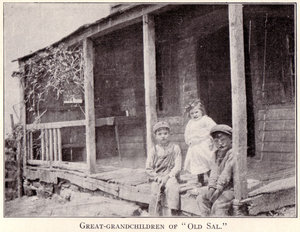Jukes and Kallikaks
|
|

The Jukes and the Kallikaks were pseudonyms for two families used as examples during the latter 19th century and early 20th century to argue that there was a genetic disposition toward anti-social behavior or low intelligence. The arguments were used to bolster advocacy of eugenics, or the "scientific" breeding of human beings, by demonstrating that traits deemed socially inferior could be passed down from generation to generation. The Nams were another such family name used in a similar work.
As a general concept the Jukes Family represented inherited criminality and the Kallikak Family inherited mental retardation.
The Jukes family was described by Richard L. Dugdale in 1877 in The Jukes: A Study in Crime, Pauperism, Disease and Heredity. A follow-up to Dugdale's work was published by Arthur H. Estabrook of the Eugenics Records Office at Cold Spring Harbor, New York in 1916 as The Jukes in 1915. This latter work studied 2,820 persons, including 2,094 descendants of the original six Juke sisters.
The Kallikak family was described by Henry H. Goddard in 1912 in The Kallikak Family: A Study in the Heredity of Feeble-Mindedness.
See also
External links
- Henry H. Goddard's paper describing the Kallikaks (http://psychclassics.yorku.ca/Goddard/)
- Arthur Estabrook's 1915 follow-up study of Richard L. Dugale's Jukes family (http://www.disabilitymuseum.org/lib/docs/759.htm)
- Bad Seed or Bad Science? The Jukes data re-examined (http://www.wehaitians.com/bad%20seed%20or%20bad%20science.html)
